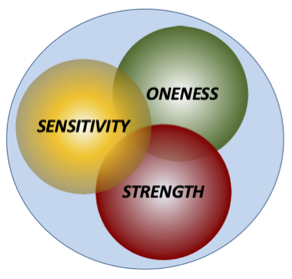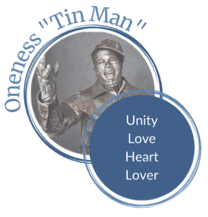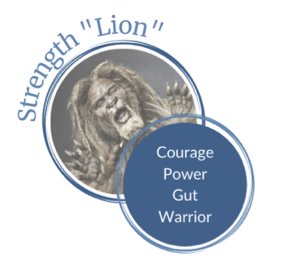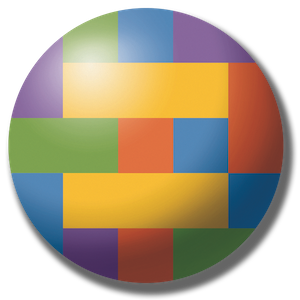November 2023
University Study Validates The Sum’s Power of Difference Assessment and Model
Charlottesville, VA–
Unconscious patterns related to seven differences: race, culture, gender, sexual orientation, disability, class, and religion, can now be reliably measured by the Power of Difference Assessment (PDA). The assessment was developed by a Charlottesville nonprofit called The Sum and was recently studied by a team of researchers from North Carolina State University led by Dr. Christy Byrd. The team found the PDA to be a psychometrically sound, reliable, and valid measure with an innovative, asset-based lens that clarifies learning edges and recommendations. They concluded: “Educators, diversity trainers, and others can confidently use the PDA to assess and support cultural competence for individuals and organizations across a spectrum of fields.”
What the Assessment Measures
The PDA measures three primary patterns of thinking, feeling, and behavior, described by the Power of Difference Model (PDM). The model’s terms for these patterns are Sensitivity, Oneness, and Strength and each one has both assets and limitations.
Sensitivity
Those in Sensitivity
value differences but tend to get “frozen” by an over-focus on political correctness. In this pattern, one’s personal meaning comes from working to change systems and people, but this outward focus can also be used to patronize others and avoid one’s own internal development.
Oneness
Those in Oneness see and appreciate that we are all part of “one human family” and this focus is the primary source of meaning. In this pursuit they may
devalue difference and avoid hard conversations about difference and thereby inadvertently reproduce systemic pressure to assimilate to the dominant norm.
Strength
Those in Strength value courage, loyalty, and a willingness to sacrifice for the group. In their desire for meaning they cast themselves as “good” and others as “bad” and from this worldview they desire to win, dominate, and be superior at all costs. Those in this pattern tend to
evaluate differences.
More detailed descriptions of these patterns can be found below (Figure 2).
The Power of Difference Model offers insight for an individual’s internal learning and
also describes dynamics that occur within families, classrooms, organizations, institutions, and society as a whole (consider for example, how these patterns play out in the current political divisions). Moreover, it explains why and how both the internal and external reflect and reproduce the other.
When individuals operate according to one primary pattern (often learned in childhood), they can conflict starkly with the other two. They tend to seek information that legitimizes their primary pattern and de-legitimizes the other two. This creates an endless stand-off or
dysfunctional homeostasis both within us and in our groups and systems (See Figure 1).
Figure 1
 ‘Dysfunctional Homeostasis’ (within a person, organization, and/or society)
‘Dysfunctional Homeostasis’ (within a person, organization, and/or society)
 ‘Functional Homeostasis’ (as people and organizations integrate the assets of all 3 patterns)
Integrating All Three Patterns
‘Functional Homeostasis’ (as people and organizations integrate the assets of all 3 patterns)
Integrating All Three Patterns
The Sum uses the archetypes of the Scarecrow (Magician) seated in the brain, the Tin Man (Lover) seated in the heart, and the Lion (Warrior) seated in the gut (from Frank Baum’s
The Wizard of Oz) as an analogy for the patterns of Sensitivity, Oneness, and Strength respectively. They further suggest that, with individualized support, people naturally integrate the assets of all three patterns internally. Only from this integration can people become catalysts for meaningful change in relationships and in organizations, increasingly demonstrating:
- greater effectiveness across difference
- recognition of their own privilege and how to use it effectively
- impacting others, generally, as intended across differences
- a sense of solidarity across differences
- pride without prejudice
- an ability to “refuse both silence and violence”
- courage to withdraw participation in violent aspects of systems
- capacity to catalyze meaningful systemic change without effort
- greater internal stability: less rising and falling on external conditions
- experiencing greater personal clarity, mission, and fulfillment
- an ability to hold others accountable without blame or shame
- less burnout and overwhelm related to issues of diversity, equity, and inclusion (DEI)
Supporting people and organizations in this internal integration process is the mission of The Sum. J. Elliott Butler-Cisneros, The Sum’s Executive Director and Founder says of the assessment and model, “I’m always learning that whatever we’re called to do, whatever our field, our capacity increases exponentially the more we learn to integrate these patterns and live from solidarity across our differences.”
You can download the full study from North Carolina State University
HERE. You can take the PDA or arrange a group administration at The Sum’s
www.thesum.org or you can try the free
Race Pattern Quiz while you’re there. Key stakeholders can take the PDA for free (sliding-scale is also available).
“Home is a place we all must find. It’s not just a place where you eat or sleep. Home is knowing. Knowing your mind, knowing your heart, knowing your courage. If we know ourselves we’re always home, anywhere.” ~ Glinda, the Good Witch
| The Power of Difference Model: Summary of Primary Patterns ©2022 The Sum |
| Pattern, Values, Body Location, Archetype |
 |
 |
 |
| Descriptions/ Limitations |
Values Difference; Experiences frozenness, anxiety, and confusion because of a desire NOT to offend; Tends to over-focus on political correctness; Can patronize others by trying to get them to “get it like me” |
Devalues Difference; Often unaware or in denial of impact across difference; Can over–focus on sameness and oneness and, in this way, minimize and marginalize differences |
Evaluates Difference; Can be combative and project threat…creating enemies; Tends to view things as win/lose; Equates domination with superiority |
| Assets |
Sees importance of equity; Holds value for justice for all; Recognizes and celebrates difference |
Sees good in everyone; Values “one human family”; Bridge builder |
Clarity, Courage, Strength, Willingness to self-sacrifice |
| Can Sound Like |
Black Lives Matter; How do we get the people who really need it to understand; I know these issues are important but I’m afraid to offend someone |
All Lives Matter; We all bleed red; Focusing on differences is divisive and dangerous; I don’t see color, disability, religion…I just see people |
I Stand with the Police; People need to stop whining, acting like victims, and pull themselves up by their bootstraps; I’m like the sheepdog, here to protect the sheep from the wolves |
| Rule/Law |
Platinum Rule (treat others the way they would like to be treated) |
Golden Rule (treat others the way you would like to be treated) |
Law of the Jungle (survival of the fittest) |
| Fear |
Freeze |
Flight |
Fight |
| Systems of Oppression |
Reproduces systems of oppression by failing to stand in power and projecting responsibility on to others. |
Encourages assimilation to dominant group and there-by, systemic oppression. |
Can seek supremacy and suppression/oppression openly. |
| Primary Learning Edge
|
Strength; learning to refuse silence & honor one’s own voice/power; ferocity w/o violence |
Sensitivity; making room for and honoring people’s self-identified differences;difference ¹ danger |
Oneness; ability to manage fear of perceived threat and combativeness; gentleness ¹ weakness |
 ‘Dysfunctional Homeostasis’ (within a person, organization, and/or society)
‘Dysfunctional Homeostasis’ (within a person, organization, and/or society)
 ‘Functional Homeostasis’ (as people and organizations integrate the assets of all 3 patterns)
Integrating All Three Patterns
The Sum uses the archetypes of the Scarecrow (Magician) seated in the brain, the Tin Man (Lover) seated in the heart, and the Lion (Warrior) seated in the gut (from Frank Baum’s The Wizard of Oz) as an analogy for the patterns of Sensitivity, Oneness, and Strength respectively. They further suggest that, with individualized support, people naturally integrate the assets of all three patterns internally. Only from this integration can people become catalysts for meaningful change in relationships and in organizations, increasingly demonstrating:
‘Functional Homeostasis’ (as people and organizations integrate the assets of all 3 patterns)
Integrating All Three Patterns
The Sum uses the archetypes of the Scarecrow (Magician) seated in the brain, the Tin Man (Lover) seated in the heart, and the Lion (Warrior) seated in the gut (from Frank Baum’s The Wizard of Oz) as an analogy for the patterns of Sensitivity, Oneness, and Strength respectively. They further suggest that, with individualized support, people naturally integrate the assets of all three patterns internally. Only from this integration can people become catalysts for meaningful change in relationships and in organizations, increasingly demonstrating:
 ‘Dysfunctional Homeostasis’ (within a person, organization, and/or society)
‘Dysfunctional Homeostasis’ (within a person, organization, and/or society)
 ‘Functional Homeostasis’ (as people and organizations integrate the assets of all 3 patterns)
Integrating All Three Patterns
The Sum uses the archetypes of the Scarecrow (Magician) seated in the brain, the Tin Man (Lover) seated in the heart, and the Lion (Warrior) seated in the gut (from Frank Baum’s The Wizard of Oz) as an analogy for the patterns of Sensitivity, Oneness, and Strength respectively. They further suggest that, with individualized support, people naturally integrate the assets of all three patterns internally. Only from this integration can people become catalysts for meaningful change in relationships and in organizations, increasingly demonstrating:
‘Functional Homeostasis’ (as people and organizations integrate the assets of all 3 patterns)
Integrating All Three Patterns
The Sum uses the archetypes of the Scarecrow (Magician) seated in the brain, the Tin Man (Lover) seated in the heart, and the Lion (Warrior) seated in the gut (from Frank Baum’s The Wizard of Oz) as an analogy for the patterns of Sensitivity, Oneness, and Strength respectively. They further suggest that, with individualized support, people naturally integrate the assets of all three patterns internally. Only from this integration can people become catalysts for meaningful change in relationships and in organizations, increasingly demonstrating:



